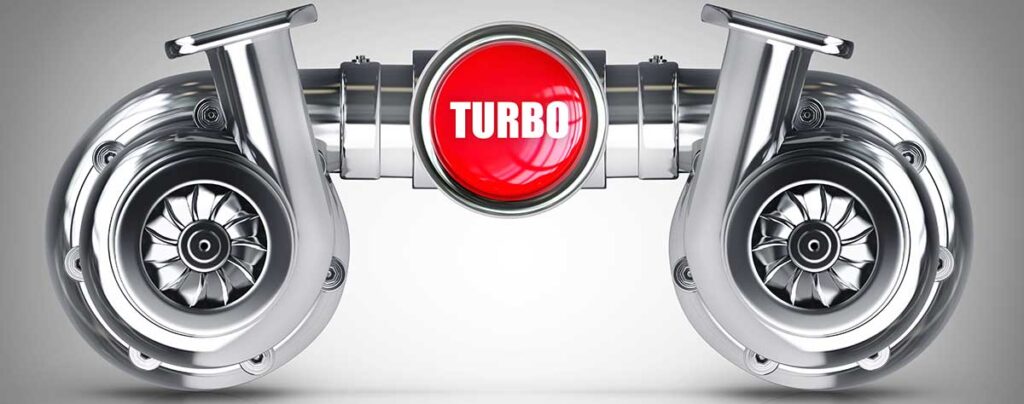
With today’s emphasis on efficiency and fuel economy, smaller-displacement turbocharged engines are becoming more and more commonplace. By utilizing a turbocharger, engines can produce more power without using as much fuel, from a smaller engine. Turbo Engine Repair
Most turbos fail gradually, and will cause burning oil or coolant in the exhaust, or a lot of oil in the intake depending on where the seal has failed. Turbos generally provide warning signs before complete failure, usually a noticeable whine that grows louder when boosting, and can become a loud howl if not fixed. When the turbo fails, you will experience a sudden loss of power, greatly increased oil consumption, and blue smoke from the exhaust. The good news is that engine damage due to turbo failure is rare. If the impeller breaks, it usually ends up in the intercooler and catalytic converter.
If you experience a turbo failure, you should remove your intercooler and all intake system tubes including the air box, filter housing, and other associated tubes, and clean them well to make sure there is no debris inside to prevent a second failure.
Although turbochargers themselves are relatively simple devices, replacement can be very expensive. A new turbocharger can cost several thousand dollars for the part alone, not counting installation and labor. To avoid early turbo failure, you should follow your manufacturer’s oil and service recommendations religiously. Turbo engines can be very hard on motor oil because the hot side can get visibly red hot, and the shaft can spin as fast as 100,000 rpm. Advances in motor oil and cooling have made today’s turbo engines more durable than ever, but one late oil change can still have fatal effects on a turbocharger.
The turbocharger sits between the engine and exhaust, and uses the energy from the exhaust to spin two finned wheels mounted on a common shaft. The turbine on the hot side captures the power of the exhaust, and the cold side compressor wheel forces compressed air back into the engine, increasing oxygen levels in the combustion chambers and allowing the engine to generate more power, and increasing fuel economy.
If your turbocharger fails due to normal wear, then rebuilding may be possible. Rebuilding a turbocharger is an extensive and precise process that requires machining and balancing, so it should definitely be handled by a professional. A rebuilt turbocharger with fresh bearings and seals can continue to function for tens of thousands of miles at considerably less cost than a brand new replacement.
If you are experiencing problems with your turbocharger and suspect that it may need a rebuild or replacement, come in to your Certified Auto Repair Specialist of Pasadena today so that our certified mechanics can help you out.

